My Village
Oak Lawn is the Place
This post is devoted to the history of Oak Lawn as I see it and my personal matchbook collection
1923 photo - Oak Lawn Public Library
on the photo itself
As I turn old and grey I need physical things to remind of who I am and what I've done. This orate plate below is one of those reminders to me - that I grew up in a place that has history, I have some history in it and a lot of my life was formed by it.
this plate is part of my collection
1909 calendar circles the outer circumference of the plat. That year Oak Lawn was incorporated as a village in the County of Cook
the text on the plate is barely noticeable at first glance so some
creative lighting revealed the description
on the face of the dish

This is apparently his second store on 95th Street
and Raymond at the turn of the 20th century
image below - 'Oak Lawn' by Kevin Korst
photo below - Oak Lawn Public Library
The Geography of Worth Township
the topography in 1834 shows the streams and creeks
image - Oak Lawn Public Library
If you drive west from Pulaski/103rd Street the visualization of sinking into a valley becomes evident
image - Oak Lawn Public Library
If you drive west from Pulaski/103rd Street the visualization of sinking into a valley becomes evident
This 1886 map from the Oak Lawn Public Library depicts the Township of Worth in the County of Cook. A township was the first type of governmental unit in Illinois. In the Village of Oak Lawn, a village is a settlement not larger than a town but currently that term seems a bit vintage in scope due to the suburb geographical size and population by the late 20th century The largest community in Worth Township in the late 19th century was the City of Blue Island where Oak Lawn residents would have to shop
Conditions were Harsh
The Oak Lawn Story by Archibald McKinlay
'Oak Lawn is village in Cook County, 13 miles SW of the Loop. Oak Lawn lies just outside the southwestern edge of Chicago, and is one of the largest municipalities in Cook County. The intersection of 95th Street (the village's main east-west thoroughfare) and Cicero Avenue is one of the county's busiest. A farming community until the mid-twentieth century. Settlers established businesses in the area in the 1840's and 1850's, attracted by a modest stream called Stony Creek (also spelled Stony Creek) that meandered through a dense grove of black oak trees. The area was variously known as Black Oaks and Black Oak Grove. By 1860, a schoolhouse and several farmhouses lined Black Oak Grove Road (95th Street). Unfortunately, the nearest stores and
post office were in Blue Island, some 10 miles away ...

post office were in Blue Island, some 10 miles away ...

After the Civil War, German immigrants began settling in the area. A new post office opened in neighboring Evergreen Park. The 1880's brought several changes to Oak Lawn. The Wabash Railroad connected the area with Chicago; the first subdivision was platted near the train station; and the community was formally called Oak Lawn for the first time. A post office was established in 1882, and a portion of Stony Creek was enlarged to form The Oak Lawn Lake, a recreational area [that was a selling pitch to move here]...
a 1911 map of mostly Worth Township in Cook County where Oak Lawn is located from the Library of Congress
a 1911 Sanborn Fire Insurance Map of the area
from the Library of Congress
By 1909, the year of incorporation, the village's three hundred citizens were scattered over 1.5 square miles [on a map it looked like a rectangle]. Some of these citizens were Dutch truck farmers who had arrived around the turn of the century. The term incorporation meant that gas lines could be installed, unruly visitors picnicking in the wooded areas along the creek and lake could be policed, and the city of Chicago would be less likely to annex the community.' [In 1889 Chicago annexed four townships that doubled the size and population of their city and was looking for more].'from the Library of Congress
image - Wikipedia
The Wabash Railway connected this village to Chicago and other places in the region like the east coast
(see above image)
a photo of the rail depot and the first public school - Cook School. This are was the center of town.
This 1915-ish photo depicts commuters at the depot
and below are folks near the rails in 1910 according to the Oak Lawn Library
Wabash Avenue located next to the tracks
as it look in 1910
photo below - The Oak Lawn Story by Archibald McKinley
the second depot that I personally remember
The Oak Lawn Depot
view photos more of it with this link
the second depot that I personally remember
The Oak Lawn Depot
view photos more of it with this link
'The history of Oak Lawn can date back to 1842 when a land broker, Julian Hatch, acquired 1,273 acres in the area. From this land, a settlement named Black Oaks Grove, or simply Black Oaks, was established. The moniker was given due to the abundance of Black Oaks that lined modern-day 95th Street. The initial settler of Black Oaks was a farmer named John Simpson who obtained a parcel of land along today’s 95th Street [for 62 cents an acre according to a book called 'Oak Lawn' by Kevin Korst], ultimately establishing his farm in 1858. By 1860, the modest community instituted its first school, which was located at the corner of 95th Street and 55th Avenue [Cook School]. Soon after, with the influx of migrants from the south after the Civil War, the Trinity Lutheran Church was founded. The population by 1909 was 257. Growth and development ensued after incorporation, with the advent of electricity in 1911 and the first fire department in the 1920's. By this time, Oak Lawn was home to more than 2,000 residents, a number that only moderately increased to 3,500 in 1940 due to the [hardships of] Great Depression. A [formal] library was built in 1936, followed by Covington School in 1937 [the second public school for the village] and the organization of the Park District in 1944.' - according to Town Square about Oak Lawn
The Wild Wild West
images - The Oak Lawn Story by Archibald McKinley
a subdivision in the village as of 1892
with a link to a zoomed view of it
A 1912 Election Ballot
A 1923 Voters List
(pdf)
Vintage Business District
A 1912 Election Ballot
(pdf)
Vintage Business District
Postcards
along 95th Street












and currently
The Oak Lawn Trust & Savings
And was my Father's Bank
He used the services of this bank to purchase our house on Wick Drive in 1956
a view of the bank in 1952 during Round-Up Days
and below during Round-Up Days in 1955
Some Homes
along 95th Street




Standing on 95th Street, Elmore J. "Ollie" Harker is pictured around 1925. The Oak Lawn Trust and Savings Bank, located at 5310 West 95th Street, is visible on the left. Elmore went on to serve as Chief of the Oak Lawn Fire Department for many years.







and below the first post office
past and present

and currently
The Oak Lawn Trust & Savings
Homeowners would use these type of bank's loaning services to purchase a house. Every neighborhood would have a trust & savings with their neighborhood name attached.
opening day 1925He used the services of this bank to purchase our house on Wick Drive in 1956
a view of the bank in 1952 during Round-Up Days
and below during Round-Up Days in 1955
Some Homes
of the Early Era
a then and now sampling & perspective
a then and now sampling & perspective
1915 photo - house on 9400 block & 53 Court
with a 2020 Google Map view of it
1900-ish photo - house on 9700 Cook Avenue
with a 2020 Google Map view of it
9522 South 53rd Avenue
and a row of houses to the south of it
with a 2020 Google Map view of it below
The photo below is of 95th Street bridge that was used to cross Stony Creek Tributary that was located just north of the Oak Lawn Lake
with a 2020 Google Map view of it
1900-ish photo - house on 9700 Cook Avenue
with a 2020 Google Map view of it
and a row of houses to the south of it
with a 2020 Google Map view of it below
The photo below is of 95th Street bridge that was used to cross Stony Creek Tributary that was located just north of the Oak Lawn Lake
The Oldest House in Oak Lawn
built in the 1850's & photographed in 2010
Another Vintage Home
is an amazing look of the evolution of this house
image - Oak Lawn Public Library
according to Redfin this house was constructed in 1893
Stony Creek
This creek flows through Oak Lawn
photo below - the creek at near 95th & 54th Avenue and now buried under 95th street from the Oak Lawn Public Library

that looks like somewhere in England than Oak Lawn
This artificial lake was created from the waters of the creek to sell the village as an oasis to the southwest and probably to mimic is bigger neighbor to the north - Lake Michigan
as it looked in 1912
photo - The Oak Lawn Story by Archibald McKinley
either East or West Shore Drive
unknown date - Oak Lawn Public Library
photo - The Oak Lawn Story by Archibald McKinley
either East or West Shore Drive
unknown date - Oak Lawn Public Library
as it looked in 1916 along West Shore Drive
West Shore Drive and East Shore Drive
as it looked in 1947 and below in 1957
The lake once had an island area in the middle of it
and as it looked in 1987 below
and finally as it looked in 1999
below photo - Oak Lawn Public Library
the first established (public) school in the village
School District 123
School District 123
illustration of the building from a 1924 school program
images - The Oak Lawn Story by Archibald McKinlay

images - The Oak Lawn Story by Archibald McKinlay

as it looked in 1947 and a classroom in 1935
My Current Employer
from The Oak Lawn Story by Archibald McKinlay







I am currently employed in School District 123 since my return to Oak Lawn in 2014. As a certified teacher I chose to work as needed as a substitute teacher teaching elementary students. If my parents had decided to send me to a public school as a youth it would have been Sward School that is then and as now in my local area.
Below is some history of the district from The Oak Lawn Story by Archibald McKinlay


Peg Jorn Krueger


(see link to read)


image below - The Story of Oak Lawn by Archibald McKinley
Zoning Map as of 1927
The parish was established in 1921
A Working Village is a Happy Village in 1940
We Need Clean Water!! 1944
... and four years later in 1948
A Vintage Industry of Oak Lawn
Beatty Lumber was established in Morris, Illinois in 1895. Their second facility was located just south of the RR tracks on 52nd Avenue now a medical center as of 2019.
All the photos below are relatively recent
Some Grand Vintage Homes

This segment is from a 1992 tour of Oak Lawn
Theses houses still exist in 2020 as per Google Maps
The Matchbook Homes
A Oak Lawn Map as of 1954
1955 photo below of 95th and Cicero
looking west toward the Coral Theater
I was born that year!
Feel free to visit the
using these links














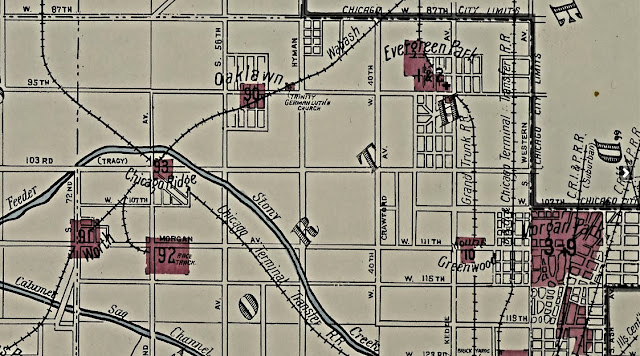


























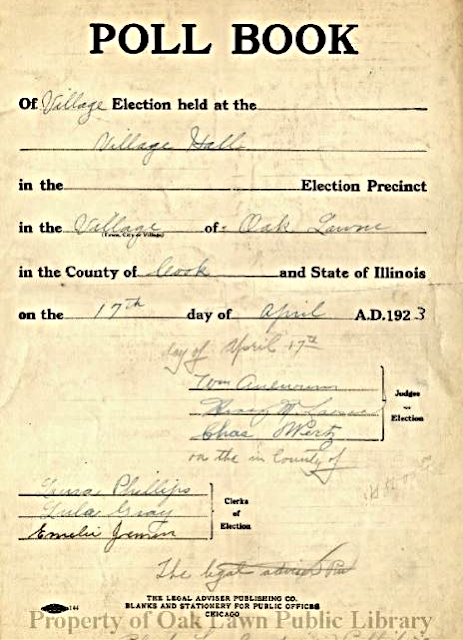




























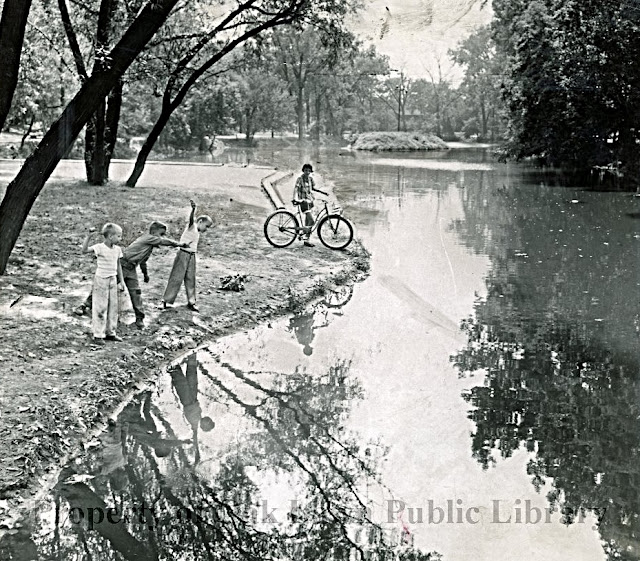



































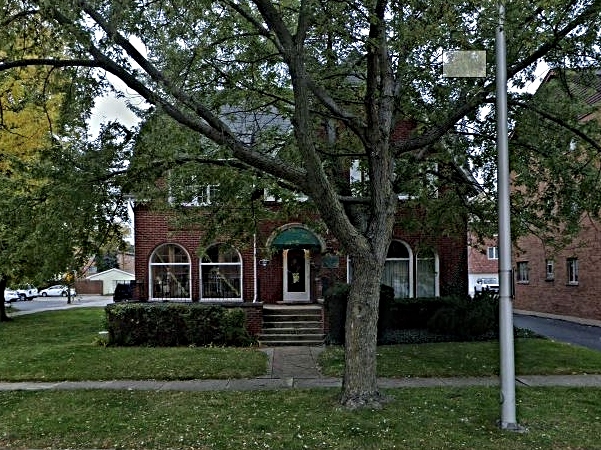














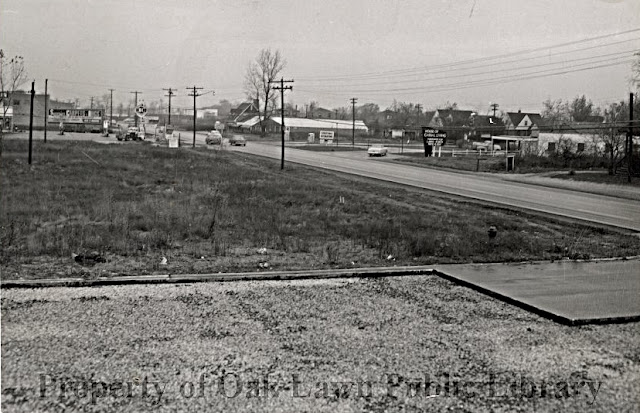
Comments
Post a Comment